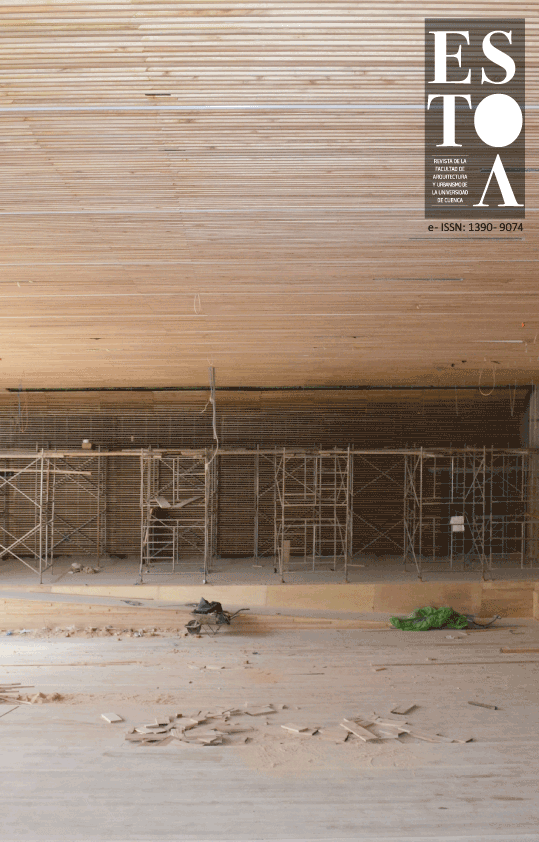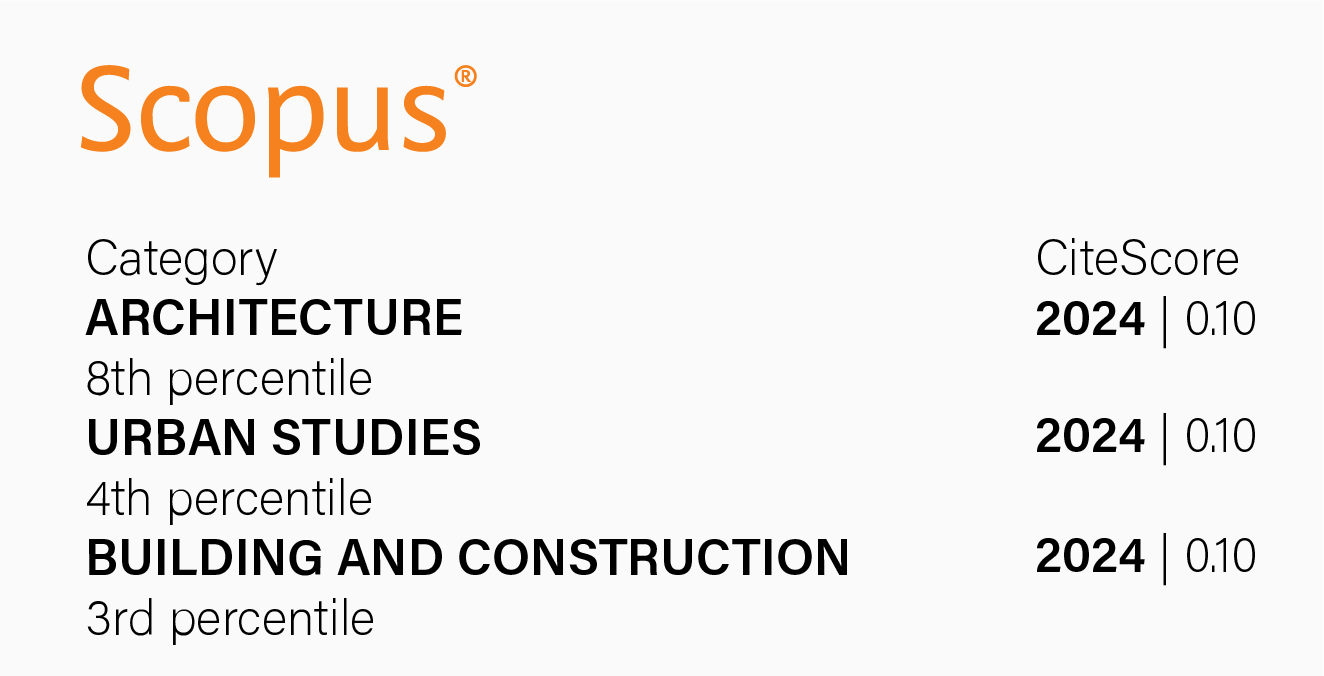Formal, symbolic and stylistic study of the church of Zaruma through its photogrammetric survey and rilievo
DOI:
https://doi.org/10.18537/est.v009.n017.a04Keywords:
architectural survey and rilievo; management, preservation and restora-tion of heritage, symbo-lism and symbology in architecture; geometry of forms; churches and styles; church of ZarumaAbstract
All patrimonial monuments of Ecuador should have a formal record both graphic and photographic, as well as textual and informative of how they originated and what their current state is. To achieve this, it is necessary to carry out an architectural survey and rilievo. There is a big difference between these two concepts: the survey describes the physical aspects of the monument, through the taking of measurements, while the rilievo defines the building non-material aspects that help to understand its origin, geometry, shapes, symbolism and styles involved. This article reveals, through the architectural survey and rilievo, as part of the research methodology, the shape, geometry, dimensions, origin, symbolism and styles of the Main Church of Zaruma (Sanctuary of the Virgen del Carmen, located in the upper part of the province of El Oro, Ecuador, whose construction dates from 1912). This record will be very useful for the conservation and restoration of the patrimonial good in the event of an accident or deterioration due to time, and thus eventually be recovered in its original form.
Downloads
References
Beigbeder, O. (2009). Léxico de los símbolos. St. Léger Vauban, Francia: Zodiaque. Traducción italia-na: Lessico dei Simboli Medievali. Milán, Italia: Jaca Book.
Bertocci, S. y Bini, M. (2012). Manual de relevamien-to arquitectónico y urbano. Colección Arquitectu-ra. Florencia, Italia: CittàStudi.
Biedermann, H. (2004). Knaurs Lexicon der Symbole. Droemersche Verlagsanstalt Th. Knaur Nachf: Mün-chen, 1989. Traducción italiana: Enciclopedia dei Simboli. Italia: Garzanti Editore.
Cairo, G. (2008) Diccionario razonado de símbolos. Bolonia, Italia: Forni.
Cecchini, N. (1998) Diccionario sinóptico de iconolo-gía. Bolonia, Italia: Pàtron.
Champeaux de, G. y Sterckx S. (1980). introducción al mundo de los símbolos. Paris, Francia: sin edito-rial.
Chevalier, J. y Gheerbrant, A. (1997). Diccionario de símbolos. París, Francia: Ediciones Robert Laffont S. A. y Ediciones Júpiter, 1969. Traducción italiana: Dizionario dei simboli—miti sogni costumi gesti forme figure colori numeri. Milán, Italia: RCS Rizzoli Libri S. p. A.
Cooper, J. C. (2012). Diccionario de símbolos: Dic-cionario ilustrado de símbolos tradicionales de todo el mundo. Pádova, Italia: F. Muzzio.
Docci, M. y Maestri, D. (2009). Manual de releva-miento arquitectónico y urbano. Roma, Italia: La-terza.
Feuerstein, G. (2001). El lenguaje espiritual de los números. Milán, Italia: Armenia.
Genovese, R. (1994). Técnicas para el restauro. Notas sobre el relevamiento fotogramétrico. Co-lección Restauro. Roma, Italia: Edizioni Scientifiche Italiane.
Jung, C. G. (1991). El hombre y sus símbolos. Milán, Italia: Longanesi.
Klange, B. (2001). I Mosaici della Scarsella del San Giovanni a Firenze: l'Iconografia, in "Commentari", anno XXVI, pp. 248-257. Roma, Italia: De Luca editore.
Konsminsky, I. (1998). Los números mágicos. Milán, Italia: Garzanti-Vallardi.
Mallinger, J. (2008) Pitágoras y los misterios. Roma, Italia: Atanòr S. r. l.
Poma, V. (1992). Documentos de Zaruma: Historio-grafía Orense. Colección Libros de Historia: “Nues-tra Tierra”. Machala, Ecuador: Agencia Editorial P&C DOS MIL 3.
Redazione Garzanti a cura di Edigeo. (2013). Diziona-rio Enciclopedico di Arti, Scienze, Tecniche, Lettere, Filosofia, Storia, Geografia, Diritto Economia. Mi-lán, Italia: Zanichelli Editori s.p.a.
Rees, E. (1994). Símbolos cristianos y raíces anti-guas. Cinisello Balsamo, Italia: San Paolo.
Reyes, Á. y Valarezo, A. (2011). Hilos del tiempo: relatos y testimonios de “El Toro” Alfredo Valarezo Zambrano. Zaruma, Ecuador: Ediciones Concejo Nacional de Cultura.
Romero, A. (2011). Imágenes de Zaruma: Fotogra-fías de Ramón Jijón y León Jiménez. Zaruma, Ecuador: Ediciones Concejo Nacional de Cultura.
Ronchetti, G. (2004). Diccionario ilustrado de símbo-los: Símbolos, emblemas, atributos, alegorías, imágenes de los dioses, etc. Milán, Italia: Hoepli.
Urech, É. (2001). Diccionario de símbolos cristianos. Roma, Italia: Edizioni Mediterranee.
Published
How to Cite
Issue
Section
License
The Journal declines any responsibility for possible conflicts derived from the authorship of the works that are published in it.
The University of Cuenca in Ecuador conserves the patrimonial rights (copyright) of the published works and will favor the reuse of the same ones, these can be: copy, use, diffuse, transmit and expose publicly.
Unless otherwise indicated, all contents of the electronic edition are distributed under a Creative Commons Attribution-NonCommercial-ShareAlike 4.0 International License.




